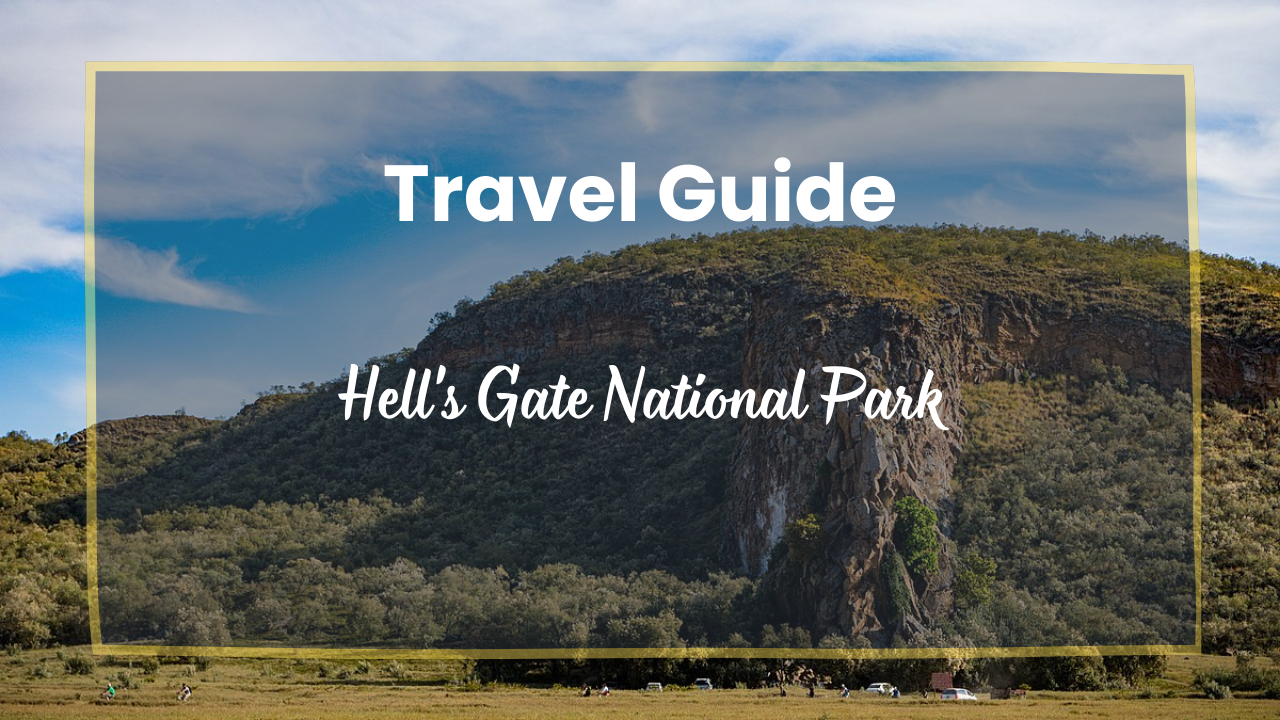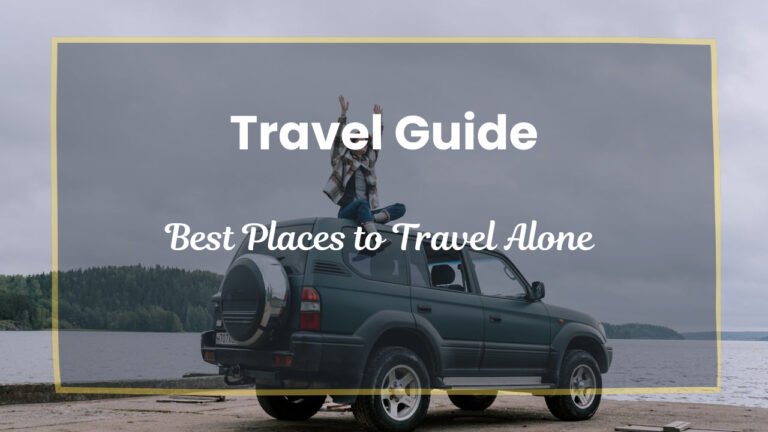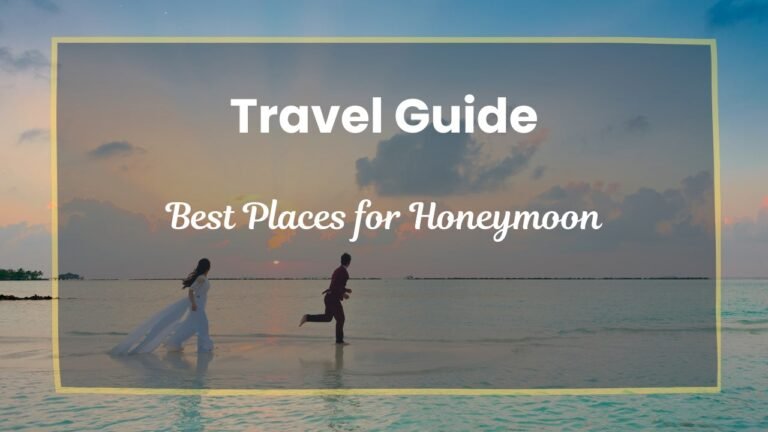Explore Hell’s Gate National Park in Kenya
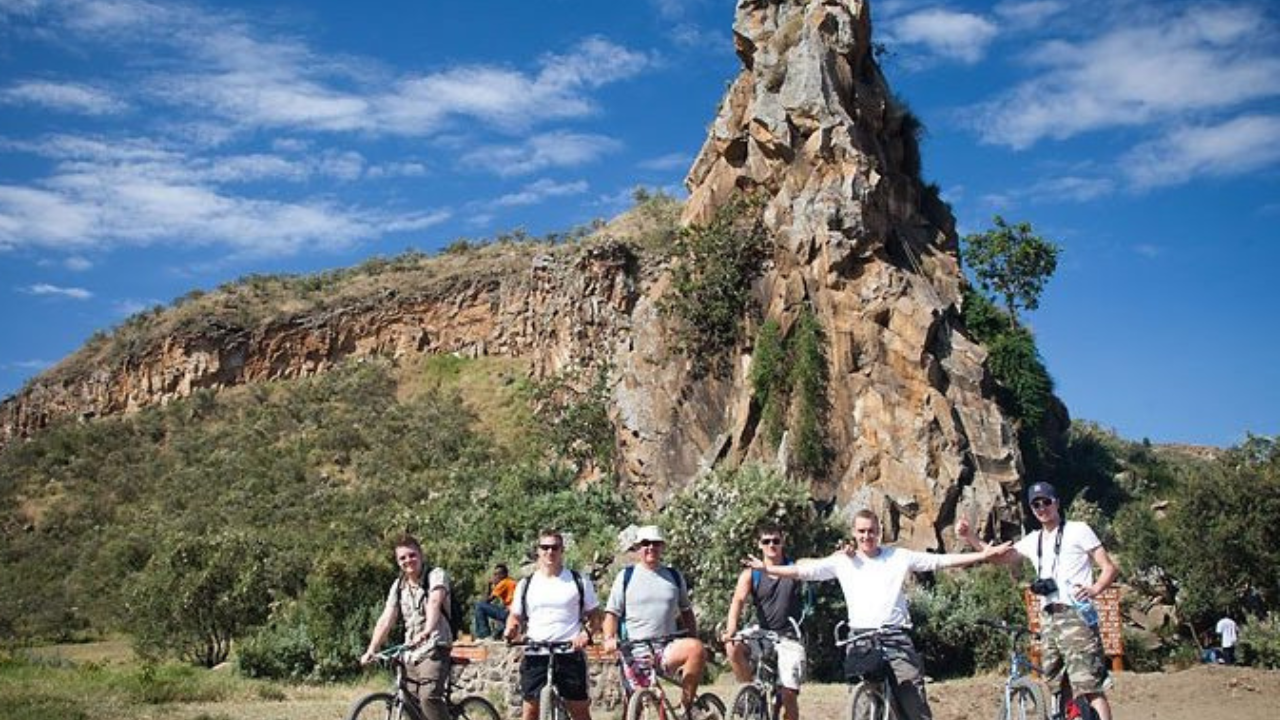
Hell’s Gate National Park in Kenya inspired The Lion King’s landscapes. Disney animators visited the park while researching the film’s setting, which is why its scenes visually resemble those from the movie.
The park is an adventure lover’s paradise in Kenya’s spectacular Great Rift Valley. From the moment you arrive, you’ll understand why it’s called “a walk on the wild side” – this park lets you leave your vehicle behind and explore nature up close on foot or by bicycle.
Whether you’re an intrepid hiker, a wildlife enthusiast, or simply seeking a scenic day trip, Hell’s Gate promises a unique and thrilling experience in the African wilderness.
Location and Background
Hell’s Gate National Park is in Nakuru County, Kenya, south of Lake Naivasha in the Rift Valley region. It’s roughly a 1.5—to 2-hour drive (about 56 miles or 90 km) from Nairobi, making it one of the easiest parks to visit from the capital.
The park’s name, “Hell’s Gate,” comes from a dramatic narrow break in the cliffs—Ol Njorowa Gorge—which was once a tributary of a prehistoric lake. Early explorers were so struck by this chasm and the geothermal smoke rising from it that they gave it the intimidating name.
Despite the fiery moniker, the landscape here is breathtaking and welcoming. Hell’s Gate was officially established as a national park in 1984, and in recent years it has gained even more recognition by being listed on UNESCO’s Tentative List for its unique geological features and wildlife.
The park’s backdrop is defined by ancient volcanoes (Mt. Longonot and Mt. Suswa are nearby) and volcanic ash deposits, which form stunning rock formations like Fischer’s Tower and Central Tower.
Standing on the valley floor, you’ll be encircled by sheer cliffs and can spot plumes of steam from underground hot springs—a reminder of the active geothermal forces beneath the earth. This mix of geology and history gives Hell’s Gate a character unlike any other park in Kenya.
How to Get There
Reaching Hell’s Gate National Park is part of the adventure. By road, the journey from Nairobi takes you through the Great Rift Valley with sweeping vistas along the way. You can drive yourself or hire a tour/operator van – head via Naivasha town and then follow the signs to the park.
The main entry point is Elsa Gate, located about 5 km from Lake Naivasha’s Fisherman’s Camp turn-off (and named after Elsa the lioness of Born Free fame). The roads to the gate are mostly paved, with the last stretch being a murram (gravel) road.
Public transportation options exist up to Naivasha town, after which you’d need a taxi or motorbike. If you prefer air travel, small charter planes or flights to the Naivasha airstrip can cut travel time (flights depart from Nairobi’s Wilson Airport).
Many travelers visit Hell’s Gate as a day trip, either directly from Nairobi or while staying overnight in Naivasha, which has plenty of lodges and camps. Because there are no lodges inside Hell’s Gate (only campsites), basing yourself at Lake Naivasha and doing a day visit is common.
- The park is open daily, typically from dawn to dusk (around 6:00 am to 6:00 pm – check current KWS info for exact times and fees).
One useful tip: Hell’s Gate has transitioned to cashless entry, so be prepared to pay park fees by card or mobile money. Once at the gate, you can hire a local guide if you want expert guidance through the gorges (recommended for first-timers or during the rainy season). Maps are available at the entrance, but the trails are pretty straightforward to follow on your own as well.
Top Attractions and Activities
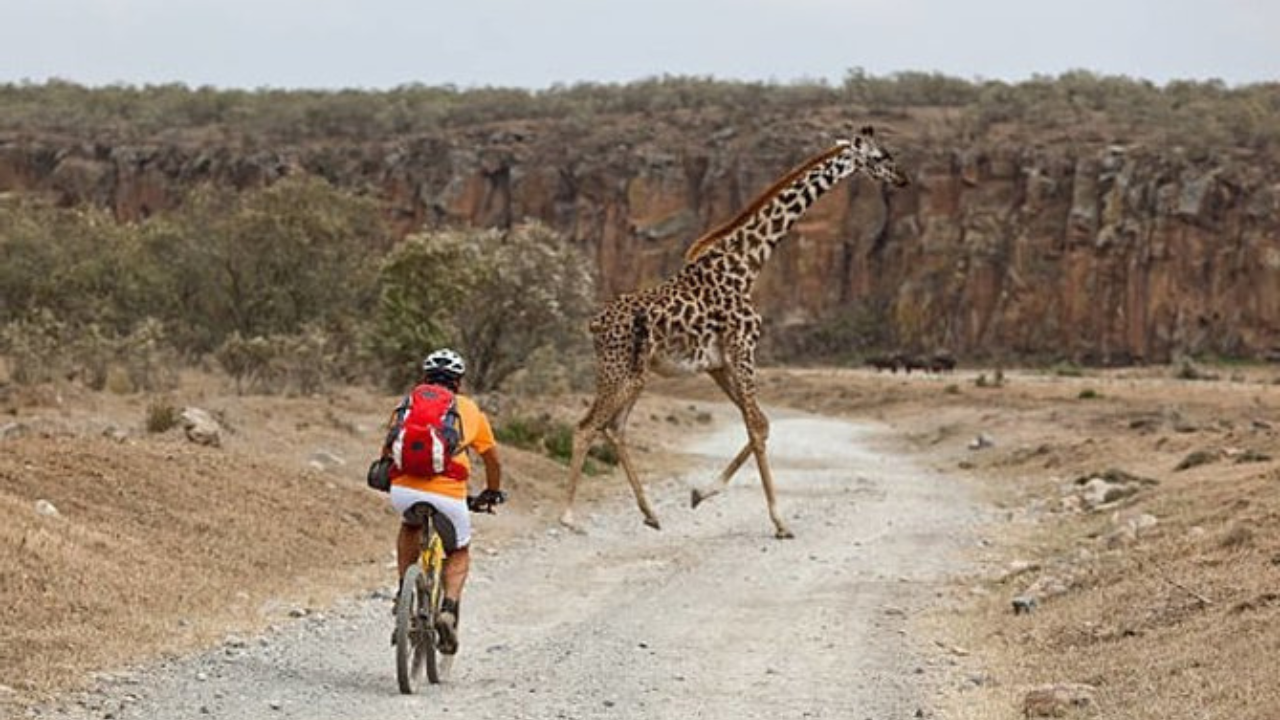
Hell’s Gate may be smaller than Kenya’s famous savannah parks, but it packs in a huge variety of attractions and activities for adventurous visitors. Here are some of the highlights you won’t want to miss:
This dramatic slot canyon is the heart of the park and the feature that gave Hell’s Gate its name. Hiking through the gorge involves walking along a dry creek bed, squeezing between high rock walls, and visiting quirky-named spots like the “Devil’s Kitchen” and “Devil’s Bedroom.”
Expect to scramble a bit over rocks and maybe get your feet wet at some points – it’s all part of the fun. The gorge’s sandstone walls are streaked with mineral colors, and hot springs trickle down in places, creating small steamy waterfalls.
- Caution: The gorge can be closed during heavy rains due to flash flood risk – always check with rangers before entering.)
For fit and adventurous travelers, a guided gorge walk is a must-do that feels like a real expedition into the Earth’s crust.
Fischer’s Tower
This striking 25-meter-tall pinnacle of rock stands near the park entrance, beckoning climbers and photographers alike. Fischer’s Tower is actually a volcanic plug – the remnant of an ancient volcano’s vent.
It’s one of Kenya’s best rock climbing sites; even novice climbers can attempt a climb here with a guide (gear and local guides can be arranged at the gate or through tour companies). If climbing isn’t your thing, it’s still worth visiting up close.
According to Maasai legend, the tower is a petrified chief’s daughter who disobeyed tradition during her marriage departure. She looked back at her home, against orders, and was turned to stone, becoming part of the landscape forever.
Standing at the base of Fischer’s Tower and gazing up, you’ll feel humbled by both the cultural folklore and the geologic forces that created this monolith.
Olkaria Geothermal Spa
A truly unique attraction, the Olkaria Geothermal Spa is a large outdoor pool fed by naturally hot mineral waters, located inside the park’s boundaries (near the Olkaria geothermal power station).
After a morning of hiking or biking, relax in the warm, turquoise-blue waters. Rich in sulfur and silica, these mineral pools are believed to benefit the skin. Imagine relaxing in a spa surrounded by wildlife and hills! It’s a surreal experience and a great way to unwind those muscles.
The spa facility has changing rooms and is open to visitors for a small additional fee. This is one of the only geothermal spas in Africa, making Hell’s Gate even more special.
Wildlife Viewing
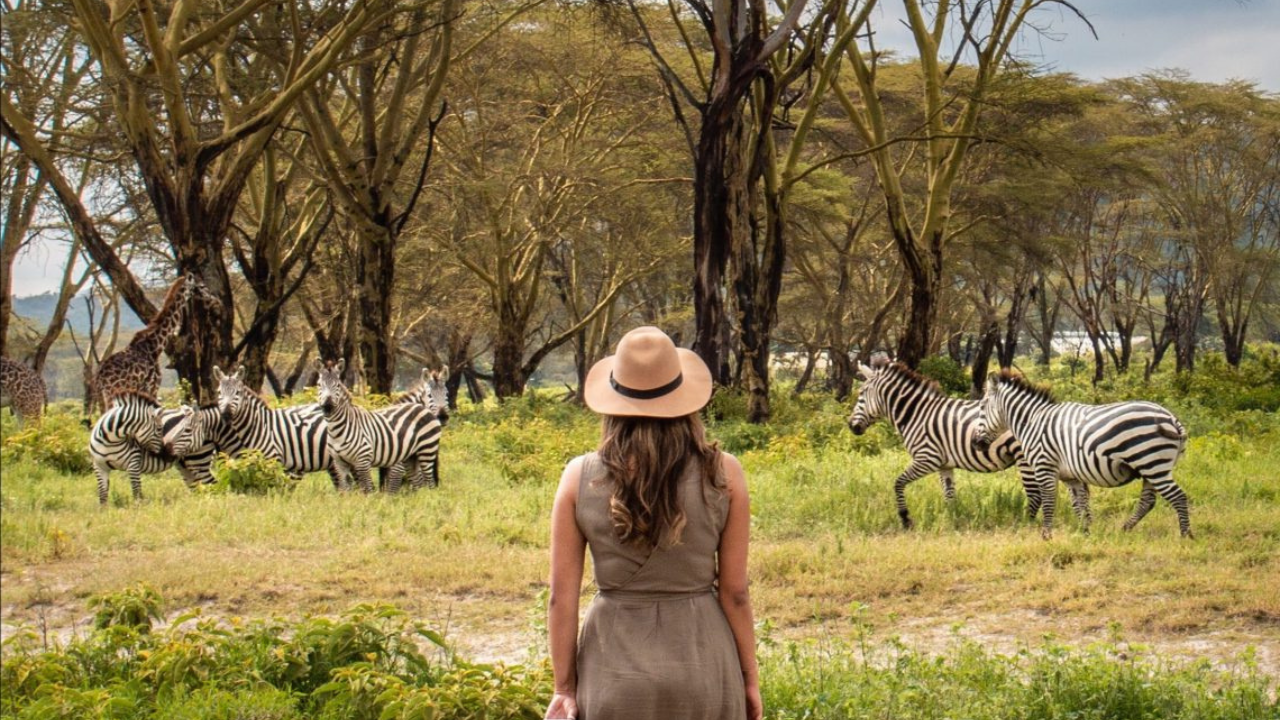
While Hell’s Gate is not a classic safari destination teeming with big predators, it offers a more intimate wildlife experience. You’ll frequently encounter herds of zebras, impalas, Thomson’s gazelles, buffalo, and giraffes grazing in the fields or along the roadside.
Without needing a vehicle, you might literally cycle or walk alongside giraffes and warthogs – a thrilling feeling! The park is also home to baboons and small gazelles like dik-dik. Predators such as lions, leopards, and cheetahs exist here but are very rare and elusive, so most visitors won’t see them, partly why walking and biking are considered safe.
Keep an eye out for buffalo, which can be aggressive if approached; maintain distance and respect all animals. For bird lovers, Hell’s Gate is paradise: over 100 species of birds, including majestic raptors, have been recorded.
You might spot Verreaux’s eagles, Rüppell’s vultures soaring above the cliffs, and augur buzzards, swifts, and many songbirds. The cliffs are nesting sites for vultures (you’ll notice white streaks of guano on the rocks marking their roosts). Be sure to bring binoculars to fully enjoy the birdlife.
Cycling and Hiking
One of Hell’s Gate’s biggest draws is the freedom to explore on foot or by bicycle – a rare treat in a Kenyan national park. The park has gravel roads and trails that make for excellent biking. You can rent bikes in nearby shops/hotels in Naivasha or the Elsa Gate.
Cycling through the Savannah as zebras cross your path and eagles circle overhead is an exhilarating experience. There’s a well-known bike route from the gate down to the gorge area (about 8 km one-way) that is primarily flat and easy.
Hiking is also fantastic beyond just the gorge. There are two main nature trails (the Buffalo Circuit and an ascent up a small volcano called Hobley’s). These trails offer peaceful walks amid sweeping scenery. Because the park is compact, you can cover a lot in a single day. For example, ride a bike to the gorge, hike inside the canyon with a guide, then bike back – all in one afternoon.
Remember, Hell’s Gate allows walking and cycling without a vehicle, but it’s advised to do so in daylight and ideally not alone (for safety and navigation). The motto here truly is “Adventure at your own pace.”
Scenic Viewpoints
Don’t miss the viewpoints such as Fischer’s Tower Viewpoint and Obsidian Caves. The Obsidian Caves feature terrain where volcanic glass formed from fast-cooled lava, creating glossy black rock underfoot. Shiny obsidian fragments glisten across the cave floor, offering a dramatic reminder of the area’s volcanic geological history.
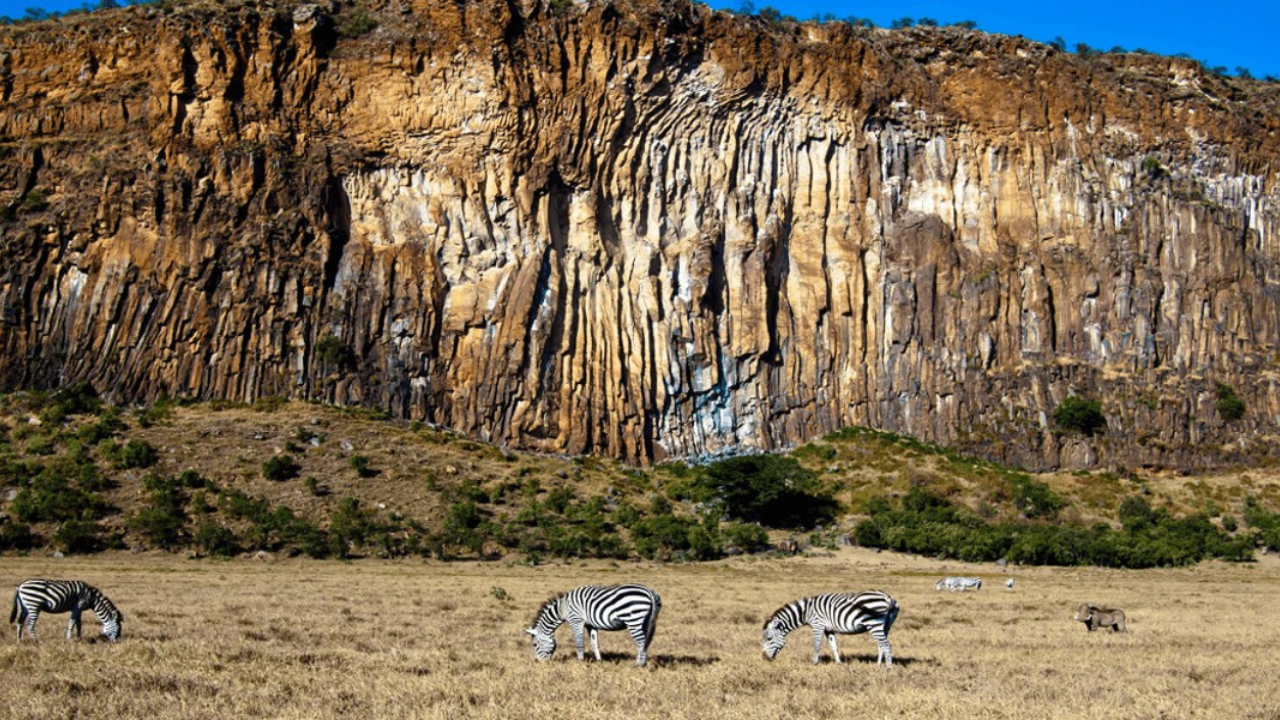
It’s a striking sight and gives a sense of the park’s volcanic past. There are also picnic sites like Moiben and Kaparitan Viewpoint, where you can have lunch with a panoramic backdrop of the valley. If you have a vehicle, drive up to the Endachata area—from there, you get a fabulous overview of the gorge and the vast Rift Valley beyond.
Wildlife and Nature Encounters
Despite its modest size, Hell’s Gate National Park boasts a rich diversity of wildlife and a healthy ecosystem. As mentioned, you’ll see common plains game up close. Giraffes nibble on acacia trees here, and you might find them blocking the road in the most photogenic way.
Waterbuck and hartebeest also roam the plains. Because there are fewer large predators, the herbivores here are relatively relaxed and easy to observe. Birdlife is especially notable – the park’s cliffs and grasslands are a haven for birds of prey.
The park’s geological features also support unique flora: patches of olive and euphorbia trees dot the landscape, and dense thickets of whistling thorn acacias cover the lower plains– listen for the eerie whistling sound when wind passes through their hollowed thorns (thus the name).
Every aspect of nature here, from rocks to birds, tells a story. As a visitor, you get to immerse yourself in this living landscape. It feels personal and wild, especially when you venture out on foot and realize you share the paths with zebras and baboons.
Tips for Visiting Hell’s Gate National Park
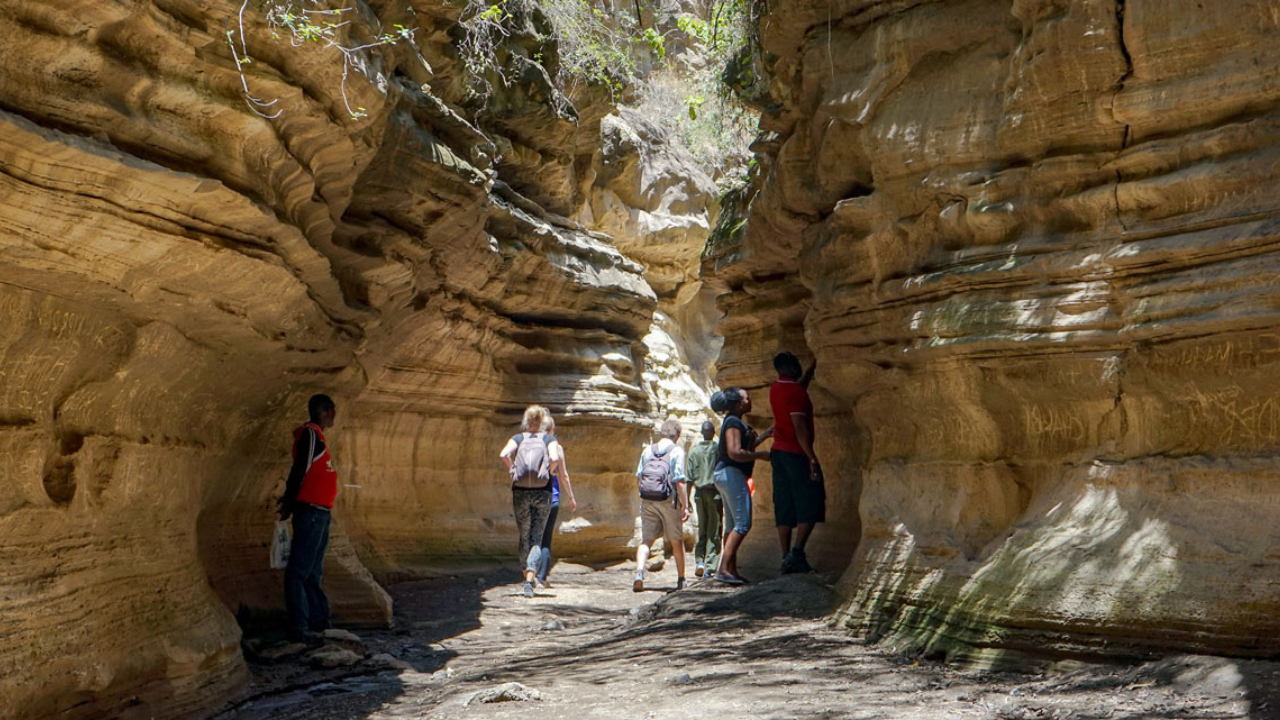
To make the most of your Hell’s Gate adventure, keep these practical tips in mind:
Best Time to Visit
The park is open year-round.
- The dry season (June to September and January to February)
It offers pleasant weather for biking and hiking, with sunny days and less risk of sudden floods in the gorge.
- The rainy seasons (March-May and Oct-Nov)
The scenery turns lush and green, but be cautious: heavy rains can make the gorge trail slippery or even inaccessible.
Always check weather forecasts and park advisories. Morning hours or late afternoon are ideal for wildlife viewing, and cooler for activities. However, midday can get quite hot, especially when cycling under the sun.
What to Bring
Since Hell’s Gate is an active park (you’ll be out walking or riding a bike), come prepared. Carry plenty of water (at least 2-3 liters per person; there is no potable water inside the park) and some snacks or a picnic lunch.
Wear comfortable walking or hiking shoes – the terrain ranges from gravel roads to rocky trails. A hat, sunglasses, and sunscreen are essential (the sun can be strong, and there’s limited shade on the plains).
If you plan to explore the gorge, expect some moderate scrambling. A basic first-aid kit and insect repellent are good to have, and binoculars will greatly enhance bird and wildlife watching.
Remember your camera—Hell’s Gate offers incredible photo opportunities, especially the expansive landscapes that inspired The Lion King’s animators!
Safety
Even though you can walk freely, always stay alert and maintain a respectful distance from animals. Buffalos are the main large animal to watch – give them space and do not startle them. If biking, yield to wildlife on the road (they have the right of way!).
The gorge hike should ideally be done with a guide, especially if it’s your first time. There have been occasional flash floods in the gorge, so never enter it when it’s raining.
Helmets are advised for cycling (some rental bikes come with them). There is a cell signal in parts of the park, but it can be patchy in the gorge. Therefore, let someone know your itinerary, or enjoy Hell’s Gate with a travel companion or group.
Park Rules and Etiquette
Respect the park’s rules – no littering (carry out all trash), and no feeding the wildlife. Keep to designated tracks when driving. If camping overnight, note that there are toilets and sometimes showers. Campfires should be kept small and attended. Given the park’s focus on ecotourism, consider hiring a local guide or using community-run bike rentals.
Conclusion
Hell’s Gate National Park is a destination that truly lives up to its reputation. It’s adventurous yet accessible, making it perfect for those who want a break from vehicle-bound safaris. Whether climbing the cliffs of Fischer’s Tower or pedaling past a herd of zebras, you’ll create memories.
This park showcases Kenya’s wild beauty on an intimate scale – experience it with all your senses. In the end, a trip to Hell’s Gate isn’t just a visit to a national park. It’s an immersion into a landscape so dramatic and alive that it inspired Hollywood films.

